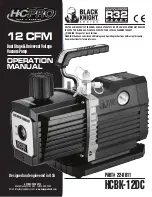
2 10 Electrical connections
Ensure that the general electrical power supply has
been cut off before starting any repair work.
2 10 1 Characteristic of the electrical supply
The electrical installation must be conducted in
accordance with the prevailing regulations.
The electrical connections must only be made when all
the other fitting operations have been completed (fixing,
assembly, etc.).
"
Warning !
The contract concluded with the energy provider must
be sufficient not only to cover the heat pump's power but
also the combined sum of all the appliances likely to be
operating at the same time. When the power is too low,
check with your energy provider the value subscribed to
in your contract.
Never use a socket for the power supply.
The heat pump must be supplied with power by special
protected leads from the electric panel via 2-pole circuit
breakers specially dedicated to the heat pump, Curve
D for the outdoor unit, curve C for the electrical heating
and domestic water back-ups (see tables on
The electrical installation must necessarily be equipped
with a 30mA differential protection.
This appliance is designed to operate under a nominal
voltage of 230 V or 400 V, +/- 10%, 50 Hz (according to
model).
2 10 2 General remarks on electrical connections
It is essential to maintain the live-neutral polarity when
making the electrical connections.
Tighten the screws on the terminal blocks perfectly.
Unsufficient tightening can cause overheating, leading
to breakdown or even a fire.
Tighten the cables using the cable glands to prevent the
conductors from disconnecting accidentally.
Connection to Earth and Earth bonding continuity are
essential.
• Connecting to screw terminals
Rigid wires
(
A
)
Rigid wires are always preferable for fixed installations,
particularly in a building.
-Always select a wire that complies with the prevailing
standards.
-Strip away around 25 mm from the end of the wire.
-With round end pliers, form a loop with a diameter
corresponding to the tightening screws on the terminal.
-Tighten the terminal screw firmly onto the loop created.
Flexible wires
(
B
)
H07RNF type (or superior quality) flexible wire can be
used with certain precautions:
-Strip away around 10 mm from the end of the wire.
-With tightening pliers, fit a round tag with a diameter
corresponding to the terminal screw's diameter on the
end of the wire.
-Tighten the tag firmly onto the terminal with a
screwdriver. We strongly advise against using flexible
wires without round tags.
-Always protect the cables when passing them through
cable clamps with PVC protective conduit 0,5 to 1 mm
thick.
A : Rigid wires
Loop
25 mm
10 mm
Round terminal
tightened
Special screw
and
washer
Terminal
block
B : Flexible wires
• Connecting to regulation cards
-Remove the corresponding connector and make the
connection.
• Connecting to spring terminals
Rigid wires
-Strip away around 10 mm from the end of the wire.
-Slide the wire into the opening provided for this
purpose.
-Push the spring with a screwdriver so that the wire
enters the cage.
-Remove the screwdriver and then check that the wire
is jammed in the cage by pulling on it.
Flexible wires
-Use the ends and proceed as before.
2
1
3
Pre-cabled bundle connector and/or Screw connector
Installation and operating manual "1533 - EN"
Air to Water Heat Pump
- 24 -
















































